Multicolored Flower Science Experiment
This post contains affiliate links for your convenience. View our full disclosure policy here.
I’m always looking for easy and fun science experiments for kids! One of my favorites is putting flowers into colored water and watching them change colors. But did you know that you can make flowers multicolored? Our Multicolored Flower Science Experiment is a thrill for little scientists. Plus, it’s super simple with very little prep time involved for you!
*Pair with our Easy Readers Spring Collection for Early Learners!
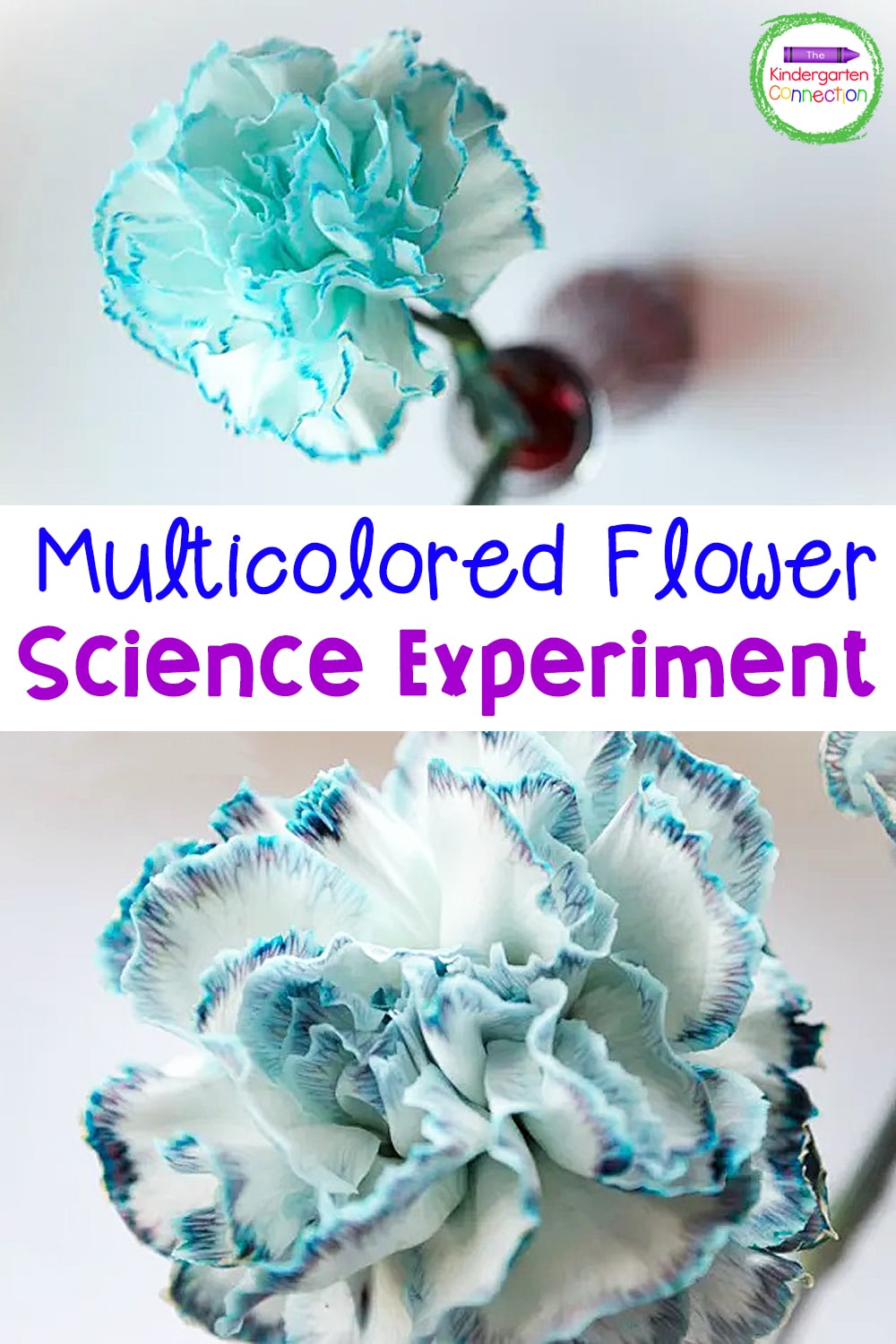
Multicolored Flower Science Experiment
Multicolored flowers are absolutely beautiful and a perfect science experiment for children to help with. Once you put the flowers into the colored water, the petals can begin transforming in a matter of hours. Here’s how you can make your own experiment!
Supplies Needed:
- Carnations
- Liquid watercolor or food coloring
- Water
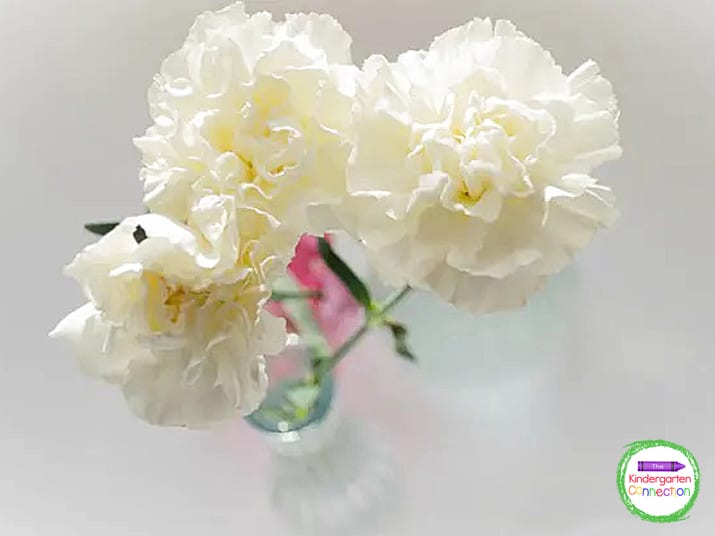
Steps for the Flower Experiment
Use freshly cut flowers and place them into a vase of water. A good rule of thumb is to place flowers into water that is about room temperature.
I used about a tablespoon of liquid watercolor to change the color of the water. Food coloring is also a great option for the water. I decided to use liquid watercolor because it does not stain, and we are messy around here! Even as the adult, I always get it all over my hands.
Now it’s time for the magic! Our flowers turned blue several hours after putting them into the blue water, and we enjoyed checking on them hourly. We let the flowers “drink” the blue water for about a day before the petals had the beautiful coloring that we had been anticipating!
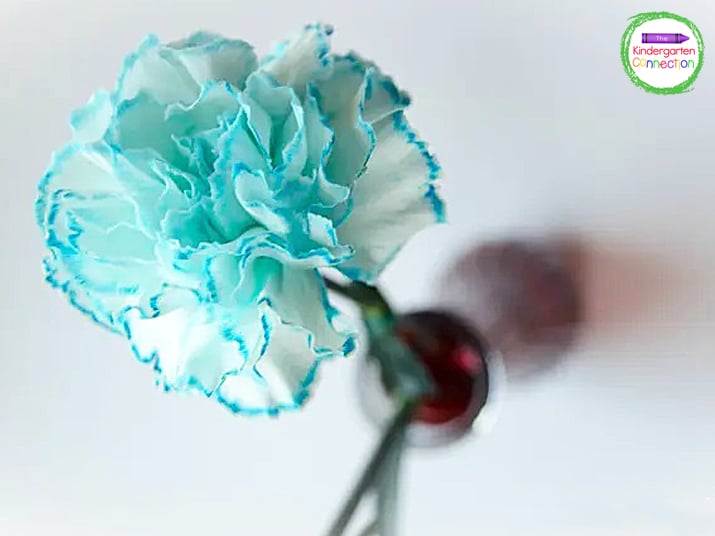
Then I emptied the blue water out and replaced it with red water. Feel free to set the blue water aside in another container so that you don’t have to remake it.
We were hoping to see our new color in a few hours, but this next change did not happen quite as quickly. In fact, we had to wait overnight.
The next morning there were two colors: blue and pink! Now, we wanted to see if we could turn them blue again.
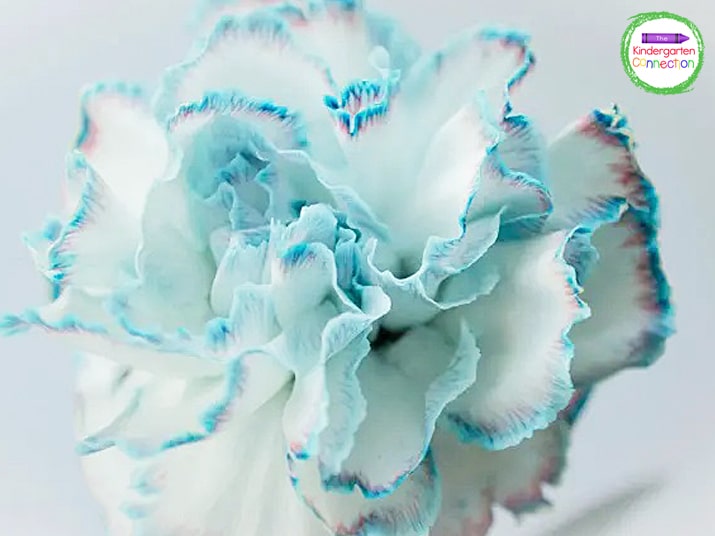
It was time to try again! We replaced the red water with blue water again. Once we got into the classroom the next morning, the only thing we could think of was finding out what happened to the flowers!
Our faces lit up with grins as we saw that the pink had turned to purple!
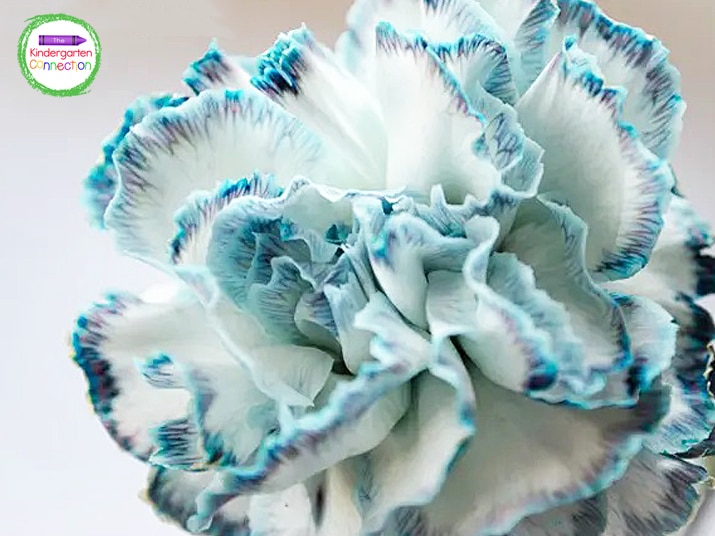
Even as the flowers started wilting, they retained their beautiful coloring. This multicolored flower science experiment is a blast, and we can’t wait to try it with more varieties of flowers!
Want unlimited access to even MORE of our activities and resources? Join us in the Print and Play Club!
Your planning will be so much easier with instant access to:
- hundreds of printables
- every TKC resource
- video lessons
- a digital games vault
- Pre-K and TK Scope & Sequence
- a PLAYlist of fun songs AND activities
- professional development
- additional teacher resources…
Be sure to request an invitation so that you don’t miss your chance to be part of the best early childhood club around!
- The Benefits of Letter Manipulatives - January 6, 2023
- Play Dough and Glass Bead Pre-Writing Practice - June 8, 2022
- Multicolored Flower Science Experiment - May 12, 2022

